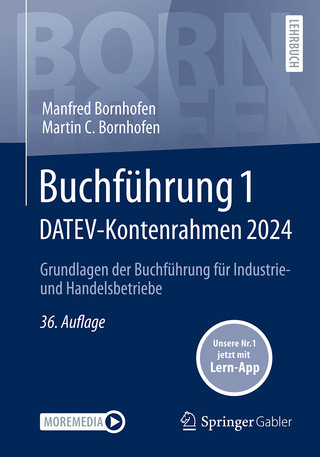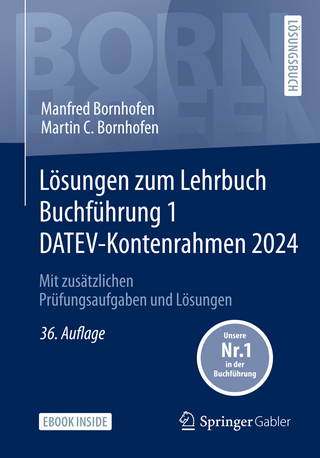
Comparative International Accounting
Financial Times Prentice Hall (Verlag)
978-0-273-70357-0 (ISBN)
- Titel ist leider vergriffen;
keine Neuauflage - Artikel merken
Firmly established as the leading text in the field, this new edition of Comparative International Accounting has been fundamentally updated to reflect the changes that are occurring in financial accounting and reporting as a result of the introduction of IFRS.
Comparative International Accounting takes a comprehensive look at the international dimensions of financial accounting and reporting. Whilst the majority of chapters have been written by the book's two main authors, the text includes several contributions from a diverse group of international experts, all of whom are leading practitioners or academics.
Contents
Contributors
Preface
Part I setting the scene
1 Introduction
Contents
Objectives
1.1 Differences in financial reporting
1.2 The global environment of accounting
1.3 The nature and growth of MNEs
1.4 Comparative and international aspects of accounting
1.5 Structure of this book
Summary
References
Useful websites
Questions
2 Causes and examples of international differences
Contents
Objectives
2.1 Introduction
2.2 Culture
2.3 Legal systems
2.4 Providers of finance
2.5 Taxation
2.6 Other external influences
2.7 The profession
2.8 Conclusion on the causes of international differences
2.9 Some examples of differences
Summary
References
Questions
3 International classification of financial reporting
Contents
Objectives
3.1 Introduction
3.2 The nature of classification
3.3 Classifications by social scientists
3.4 Classifications in accounting
3.5 Extrinsic classifications
3.6 Intrinsic classifications: 1970s and 1980s
3.7 Developments related to the Nobes classification
3.8 Further intrinsic classification
3.9 Is there an Anglo-Saxon group?
3.10 A taxonomy of accounting classifications
Summary
References
Questions
4 International harmonization of accounting
Contents
Objectives
4.1 Introduction
4.2 Reasons for, obstacles to and measurement of harmonization
4.3 The International Accounting Standards Committee
4.4 Other international bodies
4.5 The International Accounting Standards Board
Summary
References
Useful websites
Questions
Part II financial reporting by listed groups
5 The context of financial reporting by listed groups
Contents
Objectives
5.1 Introduction
5.2 IFRS in the EU
5.3 Adoption of, and convergence with, IFRS
5.4 Foreign listing and foreign investing
5.5 Reconciliations from national rules to US GAAP and IFRS
5.6 High-level IFRS/US differences
5.7 Reconciliations from IFRS to US GAAP
5.8 Convergence of IFRS and US GAAP
Summary
References
Websites
Questions
6 The requirements of International Financial Reporting Standards
Contents
Objectives
6.1 Introduction
6.2 The conceptual framework and some basic standards
6.3 Assets
6.4 Liabilities
6.5 Group accounting
6.6 Disclosures
Summary
References
Further reading
Questions
Appendix 6: An outline of the content of International Financial Reporting Standards
7 Financial reporting in the United States
Contents
Objectives
7.1 Introduction
7.2 Regulatory framework
7.3 Accounting standard-setters
7.4 The conceptual framework
7.5 Contents of annual reports
7.6 Accounting principles
7.7 Consolidation
7.8 Audit
7.9 Differences from IFRS
Summary
References and further reading
Useful websites
Questions
8 Regulation
Contents
Objectives
8.1 Introduction
8.2 Modes and models of enforcement
8.3 United States
8.4 European Union
8.5 Australia
Summary
References
Useful websites
Questions
9 Political lobbying on Accounting Standards national and international experience
Contents
Objectives
9.1 Introduction
9.2 Motivations for political lobbying
9.3 Political lobbying up to 1990
9.4 US political lobbying in the 1990s
9.5 Political lobbying of the IASC/IASB
9.6 Political lobbying of the FASB's convergence with the IASB
Summary
References
Useful websites
Questions
Part III HARMONIZATION AND TRANSITION IN EUROPE AND EAST ASIA
10 Harmonization and transition in Europe
Contents
Objectives
10.1 Introduction
10.2 Harmonization within the European Union
10.3 Transition in Central and Eastern Europe
10.4 Poland
Summary
References
Useful websites
Questions
11 Harmonization and transition in East Asia
Contents
Objectives
11.1 Introduction
11.2 Japan
11.3 China
Summary
References
Further reading
Useful websites
Questions
Part IV financial reporting by individual companies
12 The context of financial reporting by individual companies
Contents
Objectives
12.1 Introduction
12.2 Outline of differences between national rules and IFRS or US GAAP
12.3 The survival of national rules
12.4 Financial reporting, tax and distribution
12.5 Special rules for small or unlisted companies
Summary
References
Useful websites
Questions
13 Making accounting rules for non-listed business enterprises in Europe
Contents
Objectives
13.1 Introduction
13.2 Who makes accounting rules?
13.3 Which business enterprises are subject to accounting rules?
Summary
References
Further reading
Useful websites
Questions
Appendix 13.1 Contents of the plan comptable general
Appendix 13.2 Financial accounting chart of accounts
14 Accounting rules and practices of individual companies in Europe
Contents
Objectives
14.1 Introduction
14.2 France
14.3 Germany
14.4 United Kingdom
Summary
References
Useful websites
Questions
Appendix 14.1 Formats for French financial statements
Appendix 14.2 Formats for German financial statements
Appendix 14.3 Formats for British financial statements
Part V MAJOR ISSUES IN THE FINANCIAL REPORTING OF MNEs
15 Key financial reporting topics
Contents
Objectives
15.1 Introduction
15.2 Recognition of intangible assets
15.3 Asset measurement
15.4 Financial instruments
15.5 Provisions
15.6 Employee benefits
15.7 Deferred tax
15.8 Revenue recognition
Summary
References
Questions
16 Consolidation
Contents
Objectives
16.1 Introduction
16.2 Rate of adoption
16.3 The concept of a 'group'
16.4 Harmonization
16.5 Definitions of group companies
16.6 Publication requirements and practices
16.7 Techniques of consolidation
Summary
References
Further reading
Questions
17 Foreign currency translation
Contents
Objectives
17.1 Introduction
17.2 Translation of transactions
17.3 Introduction to the translation of financial statements
17.4 The US initiative
17.5 The temporal method versus the closing rate method
17.6 FAS 52
17.7 IAS 21
17.8 Translation of the income statement
17.9 Accounting for translation gains and losses
17.10 Research findings
17.11 An alternative to exchange rates?
Summary
References
Further reading
Questions
18 Segment reporting
Contents
Objectives
18.1 What is segment reporting?
18.2 The need for segment information
18.3 Disclosure regulations
18.4 Problems of segment identification
18.5 Evidence on the benefits of segment reporting
Summary
References
Questions
Part VI ANALYSIS AND MANAGEMENT ISSUES
19 International financial analysis
Contents
Objectives
19.1 Introduction
19.2 Understanding differences in accounting
19.3 Disclosure practices in international financial reporting
19.4 Interpreting financial statements
19.5 Financial analysis and the capital market
Summary
References
Questions
20 International auditing
Contents
Objectives
20.1 Introduction
20.2 Reasons for the internationalization of auditing
20.3 Promulgating international standards
20.4 The international audit process
Summary
References
Further reading
Useful websites
Questions
21 International aspects of corporate income taxes
Contents
Objectives
21.1 Introduction
21.2 Tax bases
21.3 International tax planning
21.4 Transfer pricing
21.5 Tax systems
21.6 Harmonization
Summary
References
Further reading
Useful websites
Questions
22 Managerial accounting
Contents
Objectives
22.1 Introduction
22.2 The balanced scorecard
22.3 Currency and control
22.4 Variances and foreign exchange
22.5 Culture and management accounting
22.6 Control and performance
22.7 Looking forward
Summary
References
Questions
Glossary of abbreviations
Suggested answers to some of the end of chapter questions
Author index
Subject index
| Erscheint lt. Verlag | 11.5.2006 |
|---|---|
| Verlagsort | Harlow |
| Sprache | englisch |
| Maße | 189 x 248 mm |
| Gewicht | 1128 g |
| Themenwelt | Wirtschaft ► Betriebswirtschaft / Management ► Rechnungswesen / Bilanzen |
| ISBN-10 | 0-273-70357-9 / 0273703579 |
| ISBN-13 | 978-0-273-70357-0 / 9780273703570 |
| Zustand | Neuware |
| Haben Sie eine Frage zum Produkt? |
aus dem Bereich


